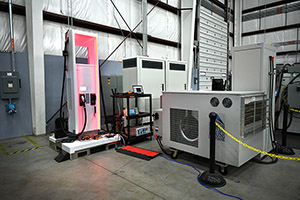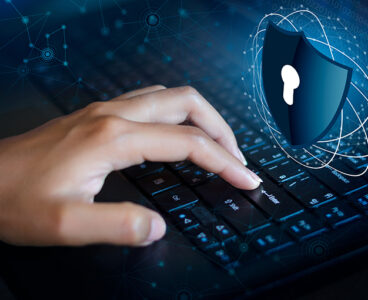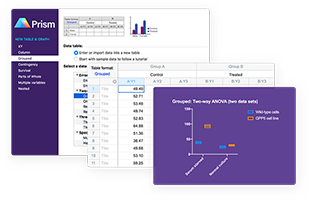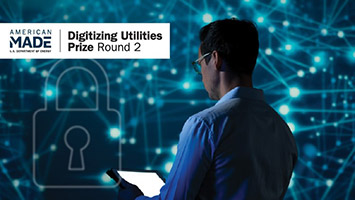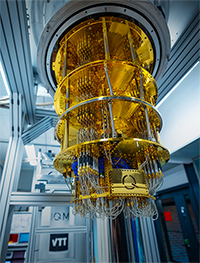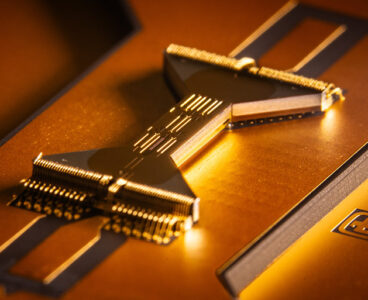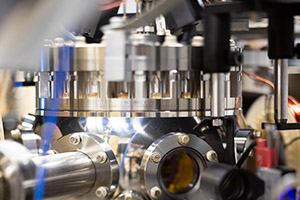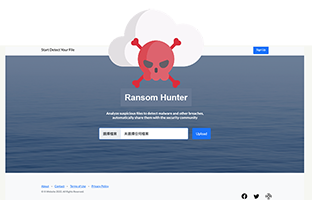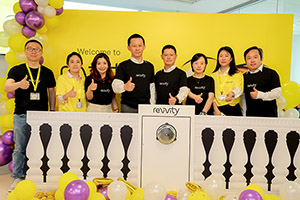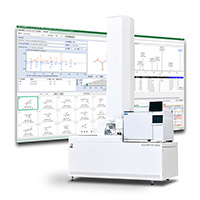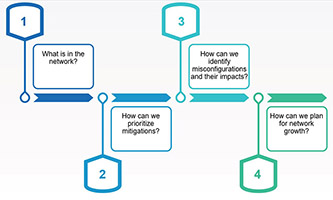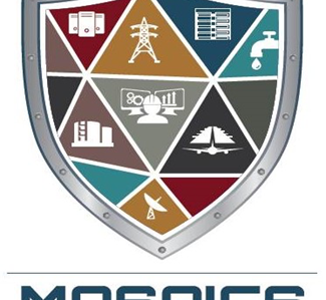Q-CTRL, pioneer of quantum infrastructure software to make quantum technologies useful, announced the appointment of Vince McBeth as principal business development defense and Public Sector. In his new role, McBeth will oversee Q-CTRL’s business development strategy in Washington D.C. and the U.K. as the company deepens its stake in the 2021 AUKUS trilateral security partnership.…
Luma Lab Connect unlocks value of lab data to accelerate scientific R&D decision-making
R&D scientific software provider Dotmatics announces the launch of Luma Lab Connect, which helps R&D laboratories automatically ingest data from instruments or data sources and centralize it in one place to increase accuracy and accelerate decision-making. Luma Lab Connect extracts descriptive metadata and experiment results from files and makes data available across labs and experiments…
Cerberus: Cybersecurity for EV Charging Infrastructure — R&D 100 winner of the day
Researchers anticipate a large network of EV charging equipment to be an attractive target for adversaries or criminal enterprises. Idaho National Laboratory’s Cerberus system — relying on basic sensors and computer hardware linked together in a smart configuration — sharply limits or sometimes eliminates damage to assets and human health. Recent work demonstrated that high-power…
University-based cybersecurity centers receive $15 Million for research and training
From the DOE: The U.S. Department of Energy (DOE) announced $15 million in funding to establish six university-based electric power cybersecurity centers that will foster collaborations across the energy sector to address gaps in energy security research and provide cybersecurity education programs. Each university, selected by the DOE’s Office of Cybersecurity, Energy Security, and Emergency…
QDx Pathology Services adopts Proscia’s software to improve speed and precision
QDx Pathology Services, an independent anatomical, molecular, and clinical pathology laboratory serving medical professionals and facilities throughout the U.S., is working with Proscia, a provider of digital and computational pathology solutions, to innovate its practice. The laboratory has deployed Proscia’s software to enable its pathologists to work faster and more confidently. Digital pathology is modernizing…
Quantinuum provides RIKEN large-scale hybrid quantum–supercomputing platform
Quantinuum, the world’s largest integrated quantum computing company, and RIKEN, Japan’s largest comprehensive research institution and home to high-performance computing (HPC) center, have announced an agreement in which Quantinuum will provide RIKEN access to its highest-performing H1-Series ion-trap quantum computing technology. Under the agreement, Quantinuum will install the hardware at RIKEN’s campus in Wako, Saitama. The deployment…
Q-CTRL integrates their error suppression technology into IBM Quantum services
Q-CTRL, a developer of useful quantum technologies through quantum control infrastructure software, announces that its Q-CTRL Embedded software has been integrated as an option with IBM Quantum’s Pay-As-You-Go Plan to deliver advancements in quantum computing utility and performance. This integration represents the first time a third-party independent software vendor’s technology solution will be available for…
New GraphPad Prism offers open file format, plus collaboration, integration capabilities
Dotmatics, an R&D scientific software company connecting science, data, and decision-making, announces a major new release of its popular GraphPad Prism application, the world’s leading analysis and graphing solution for scientific research. Prism 10 introduces several features including a new, more open file format (.prism), a variety of core graphing and analysis improvements, and a…
U.S. DOE launches digitizing utilities prize for grid reliability and resilience solutions
The U.S. Department of Energy’s (DOE) Office of Electricity (OE) has launched the $1.85 million Digitizing Utilities Prize Round 2. This competition aims to connect electric utilities with interdisciplinary teams of software developers and data experts to transform digital systems and data analytics for utilities in the energy sector. This round will also award prizes…
Finland’s 20-qubit quantum computer launch continues its supercomputer development
VTT Technical Research Centre of Finland and a European maker of quantum computers, IQM Quantum Computers, have completed Finland’s second quantum computer. The new 20-qubit quantum computer further strengthens Finland’s position among the countries investing in quantum computing. Finland completed its first quantum computer, a 5-qubit one, in 2021. Finland announced its efforts in quantum computing…
STARLIMS acquires Labstep, expanding its portfolio across R&D through product commercialization
STARLIMS, a provider of enterprise informatics solutions, announces the expansion of its solution suite through the strategic acquisition of Labstep, a cutting-edge, R&D Electronic Laboratory Notebook (ELN). This acquisition brings both companies to the forefront of modern informatics and addresses the critical challenges customers face in finding an advanced platform that supports them from R&D…
Bigger and better quantum computers possible with new ion trap, dubbed the Enchilada
From Sandia National Laboratory… Sandia National Laboratories has produced its first lot of a new world-class ion trap, a central component for certain quantum computers. The new device, dubbed the Enchilada Trap, enables scientists to build more powerful machines to advance the experimental but potentially revolutionary field of quantum computing. In addition to traps operated…
Q-CTRL first independent quantum software vendor to achieve ISO 27001 certification
Q-CTRL, a developer of useful quantum technologies through quantum control infrastructure software, announces that it has achieved ISO/IEC 27001:2022 certification, making it the first independent software vendor (ISV) in the quantum technology sector to obtain this internationally recognized standard. ISO 27001 outlines best practices for information security management system (ISMS) implementation. Conformity with this International…
R&D 100 winner of the day: ALArM: Acoustic Large-Area Monitoring
ALArM, from Los Alamos National Laboratory, Chevron USA Inc., and Evident Scientific, is a permanent acoustic sensing system for protecting entire large-area structures, including oil and gas facilities and civilian infrastructure. This patented system uses inexpensive, highly scalable sensor networks to detect damage and defects in complex, insulated, and underground inspection zones. It features an…
Quantinum works with BMW Group and Airbus to fast track sustainable mobility research
Airbus, BMW Group, and Quantinuum, experts in mobility and quantum technologies, have developed a hybrid quantum-classical workflow to speed up future research using quantum computers to simulate quantum systems, focusing on the chemical reactions of catalysts in fuel cells. In a new technical paper, “Applicability of Quantum Computing to Oxygen Reduction Reaction Simulations“, the three…
R&D 100 winner of the day: Intelligence-Driven Cybersecurity Analytic Platform
Ransomware has ravaged industries all around the world in recent years, no matter if it is manufacturing, technology, or public infrastructure. According to forecasting by cyber research firm Cybersecurity Ventures, ransomware attacks will be launched every 2 seconds on average in 2031 and will cause a global loss of $7.3 trillion. The outbreak of COVID-19…
Revvity and Scitara expand relationship to accelerate laboratory digital transformation
Revvity announces that its Revvity Signals Software business has entered into a strategic relationship with Scitara — a provider of cloud-based solutions for the scientific industry. Together, the companies will transform the way R&D teams work across the biotech, pharmaceutical, and chemical industries with technology that accelerates digital transformation in the lab environment. Revvity Signals…
Quantum Chemistry progresses towards a fault-tolerant regime using logical qubits
Quantinuum, the world’s largest quantum computing company, has become the first to simulate a chemical molecule by implementing a fault-tolerant algorithm on a quantum processor using logical qubits. This essential step towards using quantum computers to speed up molecular discovery, with better modeling of chemical systems, reduces the time to generate commercial and economic value.…
Neuroscientists to gain better insights with AI-powered image analysis
Leica Microsystems, a maker of microscopy and scientific instrumentation, has released version 12 of Aivia, its flagship AI image analysis software. Aivia 12 incorporates the Cellpose deep learning model to tackle dense neuron images, improving soma detection by as much as 46%. This release also streamlines AI-enabled 3D tracing of Golgi-stained images using new updates…
msFineAnalysis AI is next-generation software designed to perform qualitative analysis
With more than 50 years of innovation in mass spectrometry, JEOL is once again pushing science a step further with its introduction of msFineAnalysis AI, an artificial intelligence-powered software designed to automatically perform qualitative GC-MS analysis. msFineAnalysis AI offers a new structure analysis tool for unknowns that is specifically designed for the JEOL JMS-T2000GC “AccuTOF…
Revvity launches SaaS platform to accelerate drug and materials development
Revvity, Inc. has announced the launch of its Signals Research Suite, a unified, cloud-native SaaS platform that drives scientific collaboration across R&D disciplines from drug discovery to specialty chemicals material development. The new solution from Revvity Signals Software, the software and informatics arm of Revvity, is available worldwide. It integrates the Revvity Signals Notebook, VitroVivo,…
R&D 100 winner of the day: Automated Threat Estimator for Networks and Applications (ATHENA)
The rapid development of the internet has brought convenience to our everyday lives, as well as data vulnerabilities and exposures. According to Redscan Labs researchers, more than 50 common vulnerabilities and exposures were logged every day in 2021. Such vulnerabilities will only grow with increased adversary sophistication. It is no coincidence that the ATHENA software,…
Speedata’s chip accelerates complex pharmaceutical workload from 90 hours to 19 minutes in simulation
Speedata, whose first-of-its-kind Analytics Processing Unit (APU) is designed to accelerate big data analytic workloads across industries, has announced the results of a simulation of its APU on a compound similarity analysis workload in the pharmaceutical industry. Using the APU, the analysis was completed in 19 minutes, compared to 90 hours when using a CPU…
R&D 100 winner of the day: MOSAICS: Bringing the Future of Industrial Cybersecurity Into Focus
Developer: Johns Hopkins University Applied Physics Laboratory Co-developers: Sandia National Laboratories, Idaho National Laboratory, Pacific Northwest National Laboratory The vulnerability of industrial control systems (ICS) to cyberattacks has become alarmingly clear in the past several years, with a series of headline-grabbing hacks. In response, the Johns Hopkins Applied Physics Laboratory (APL), in partnership with Sandia…
R&D 100 winner of the day: The SEED Platform: Decarbonizing Cities Through Robust Data Management
National Renewable Energy Laboratory Co-developer: Lawrence Berkeley National Laboratory The Standard Energy Efficiency Data (SEED) Platform enables state and local governments to take immediate action on climate change. Buildings produce one-third of total carbon emissions in the U.S.; yet, with 146 million unique buildings spread across 50 states and D.C., there is no one-size-fits-all solution…



